12 Splendid Flowers That Start with S for You to Grow This Year + Growing Guides

This post follows our research editorial guidelines.

Sweet and stylish, a stunning sun-drenched flower garden always soothes and succors. I know my stress shrinks once the selection in my suburbs all spring into flower simultaneously.
Each superb bloom not only shines with sweet serenity but serves as a support for vital insects in the garden. Without pollinators and other beneficial insects, the garden suffers, but the solution is simple. More flowers!
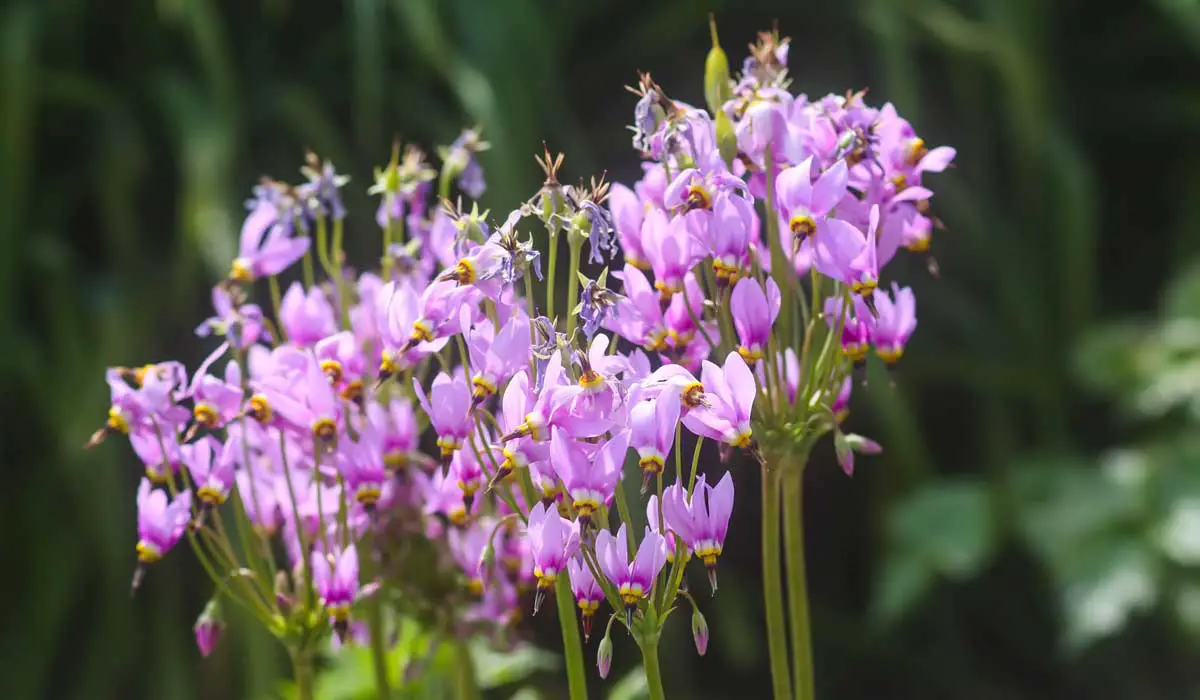
I’m working my way through my favorite flowering plants, letter by letter. In case it skipped by you, we’re up to the letter S! Shall we?
Quickly Find Flowers That Start With The Letter S
1. Sand phlox (Phlox bifida)

Sand phlox is a sweet little white perennial ground cover no more than half a foot tall. It sprouts from a tap root and produces cheerful arrays of star-shaped blooms. They tend towards pale blue blossoms, but pale purple or white are not uncommon.
Phlox is self-seeding and will form creeping colonies that will eagerly fill the empty space around them over time. This makes them a great choice for rock gardens, where they spread between cracks and crannies with ease.
| Botanical Name: | Phlox bifida |
| Growth Rate: | Moderate |
| Native Range: | Central United States |
| Hardiness Zones: | 4 to 8 |
| Soil Needs: | Dry, well-draining soils, tolerates rocky or sandy soil |
| Exposure: | Full sun to partial shade |
| Blooming Period: | Spring |
2. Sage (Salvia nemorosa)

There are many types of Sage, but the sage Salvia nemorosa is a spectacular ornamental with breathtaking spears of lavender-like flowers. They produce pink, purple, or mauve blossoms, but their biggest fans – pollinators – don’t care about color.
No matter what variety, this type of sage is one of the best for filling your garden with beautiful butterflies and busy bees.
| Botanical Name: | Salvia nemorosa |
| Growth Rate: | Fast |
| Native Range: | Europe |
| Hardiness Zones: | 3 to 8 |
| Soil Needs: | Well-drained moist soils |
| Exposure: | Full sun |
| Blooming Period: | Cut back late fall then mulch heavily to overwinter |
3. Sea thrift (Armeria maritime)
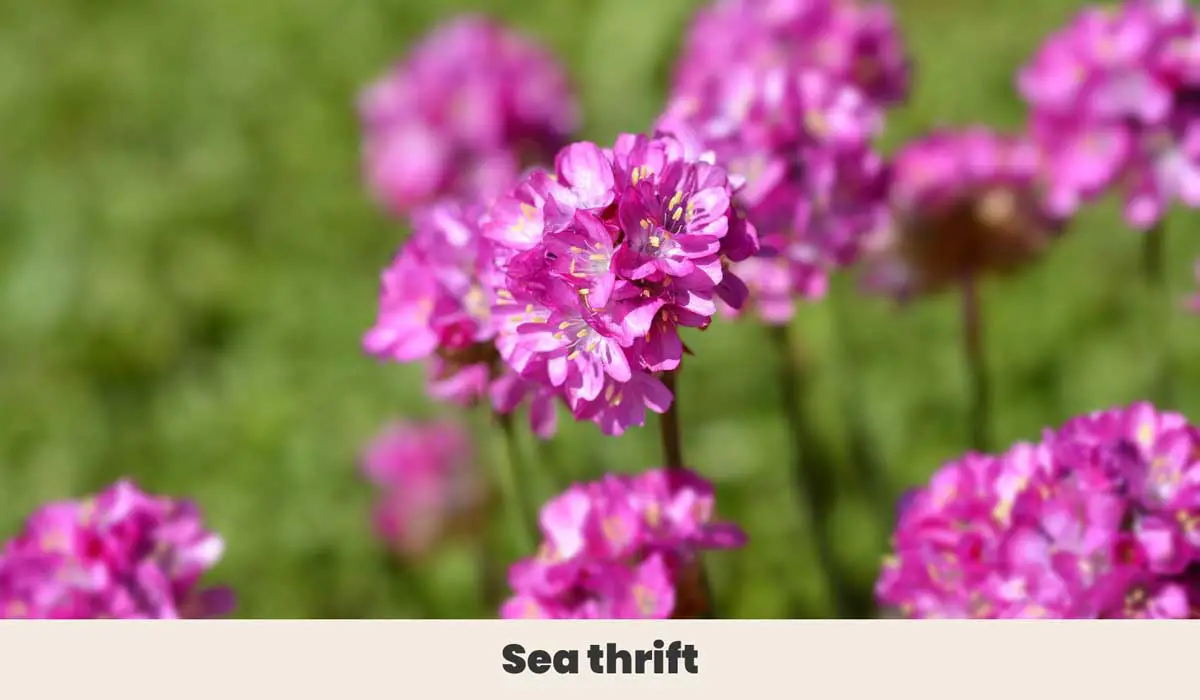
Sea thrift is sometimes referred to as Sea Pink, for its gorgeous frothy pink flowers. They grow in dense globes atop long stems and range from their signature hue to purple, white, or red.
They’re a fantastic choice for rock gardens or desert landscaping, as they need little water and thrive in soil with poor fertility. In fact, they’ve been known to rot away entirely if overfed.
| Botanical Name: | Armeria maritime |
| Growth Rate: | Slow |
| Native Range: | Seed, division, or from cuttings |
| Hardiness Zones: | 4 to 8 |
| Soil Needs: | Dry, low fertility soil, avoid heavy or clay soil |
| Exposure: | Full sun |
| Blooming Period: | Mid-spring |
4. Sea holly (Eryngium planum)
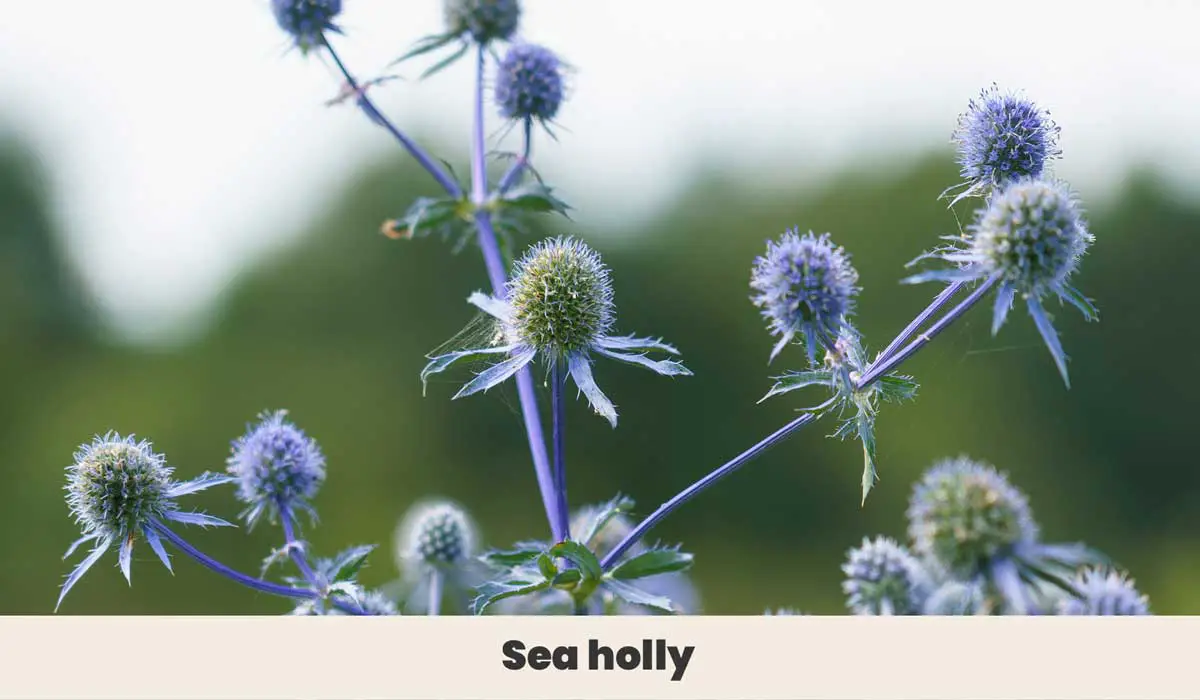
Sea holly is a fantastically strange plant. This coastal specialist produces almost perfectly round flowers that range from green to purple and even bright blue. They’re spiky and vibrant, a standout flower for those of us after something unusual for a feature plant.
Sea Holly loves sandy soil and is excellent for parts of the garden that may otherwise be challenging to fill.
| Botanical Name: | Eryngium planum |
| Growth Rate: | Slow |
| Native Range: | Eastern Central Europe including Mongolia |
| Hardiness Zones: | 5a to 9b |
| Soil Needs: | Well-drained Sandy or loamy soils |
| Exposure: | Full sun |
| Blooming Period: | Summer |
5. Serbian Bellflower (Campanula poscharskyana “Stella”)
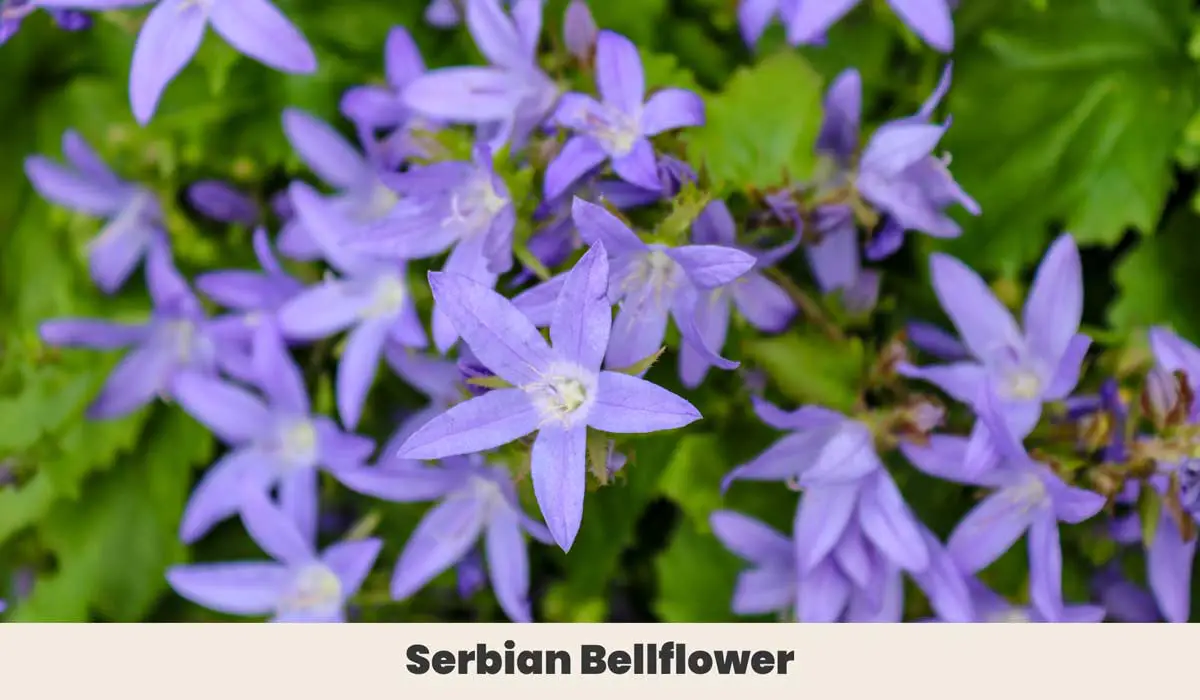
Serbian bellflower is a sprawling ground cover with a fondness for warm weather. While it’s hardy to USDA Hardiness Zone 3, it’s best grown in gentler climates. It has charming star-shaped blooms in a deep violet blue, with older flowers often appearing more purple.
They’re especially delightful planted in rock gardens or along the top of garden walls, where they tumble down in cascading waves of green and blue.
| Botanical Name: | Campanula poscharskyana “Stella” |
| Growth Rate: | Fast |
| Native Range: | Northern Balkans |
| Hardiness Zones: | 3 to 8 |
| Soil Needs: | Moist, well drained soil |
| Exposure: | Full sun to partial shade |
| Blooming Period: | Summer |
6. Shasta Daisy (Leucanthemum × Superbum)
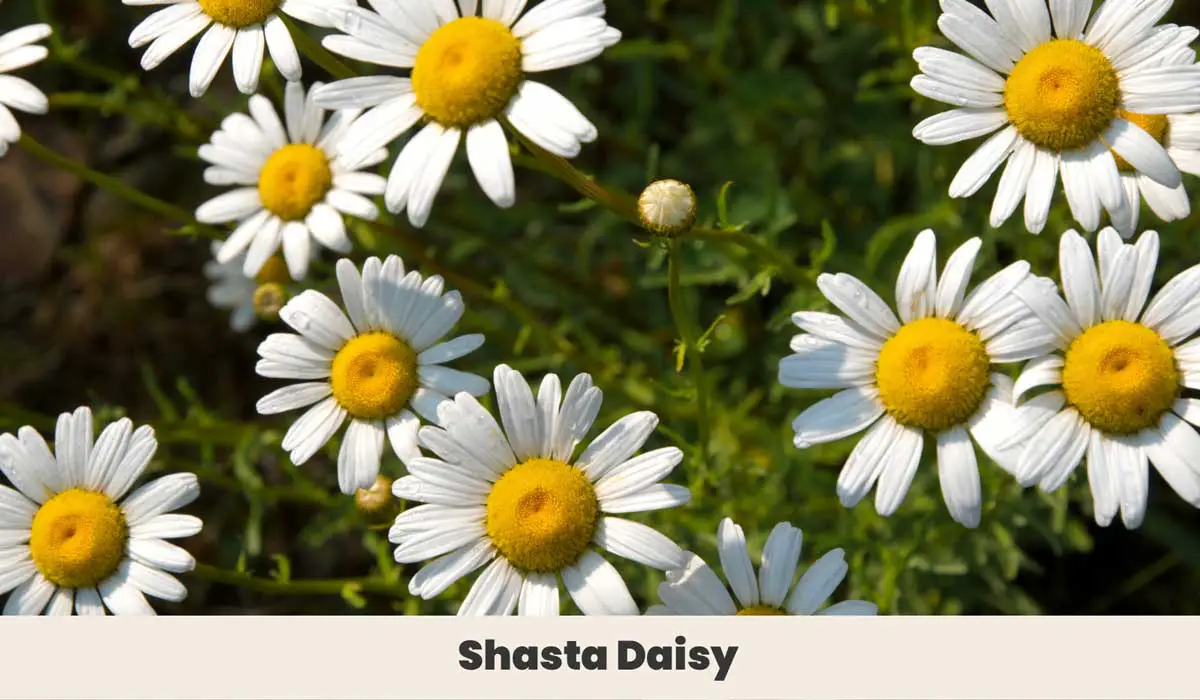
Shasta Daisy is a cute and classic daisy that was developed in 1890 by the horticulturist Luther Burbank.
It’s named after Mount Shasta, located in California. Both are snowy white. It’s a hardy, easy-to-grow perennial that does well in most conditions.
| Botanical Name: | Leucanthemum × Superbum |
| Growth Rate: | Moderate |
| Native Range: | Hybrid; no natural range |
| Hardiness Zones: | 4 to 9 |
| Soil Needs: | Moist, well draining, tolerates sand, loam, clay |
| Exposure: | Full sun to partial shade |
| Blooming Period: | Spring, summer |
7. Sneezeweed (Helenium autumnale)
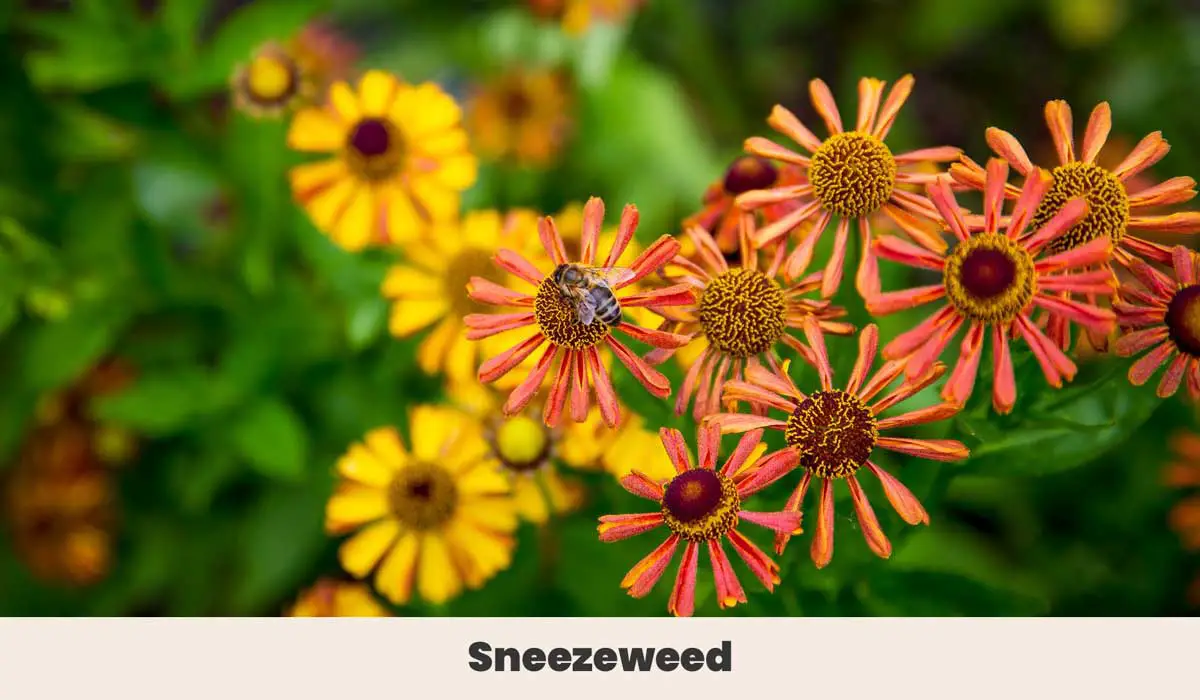
Sneezeweed has a more charming name – Helen’s Flower, after Helen of Troy. They too have a face beautiful enough to launch a thousand ships, with gorgeous gold, red, or orange perennial flowers.
Their name comes from the old practice of adding the dried flower to snuff. It was believed that the flowers would cause anyone inhaling to sneeze out any evil spirits they may have picked up.
| Botanical Name: | Helenium autumnale |
| Growth Rate: | Fast |
| Native Range: | Continental United States |
| Hardiness Zones: | 3 to 8 |
| Soil Needs: | Rich, moist soil, tolerates clay and boggy conditions |
| Exposure: | Full sun |
| Blooming Period: | Late summer to fall |
8. Snow-in-summer

The ground cover plant snow-in-summer lives up to its name. Imagine a radiant swathe of white flowers that grow like a weed all summer long. The flowers sit so thickly above the leaves that it looks like a snowdrift even on the warmest of days.
They’re so easy to grow that they often break out of gardens and become invasive, so check before you plant.
| Botanical Name: | Cerastium tomentosum |
| Growth Rate: | Moderate |
| Native Range: | Italy, Sicily |
| Hardiness Zones: | 3 to 7 |
| Soil Needs: | Dry, sandy soil. Tolerates rocky soil |
| Exposure: | Full sun |
| Blooming Period: | Late spring to summer |
9. Solomon’s Seal (Polygonatum)

Solomon’s Seal is an elegant wildflower well suited to damp, shady parts of the garden. They have an ethereal quality, with fine arching stems bearing a delicate string of sweet opalescent flowers.
It’s been used in herbal medicine for thousands of years and is believed to ease bruises and promote healing when applied as a poultice.
| Botanical Name: | Polygonatum |
| Growth Rate: | Moderate |
| Native Range: | Temperate Europe and Asia |
| Hardiness Zones: | 3 to 9 |
| Soil Needs: | Moist, organically rich soil. |
| Exposure: | Partial to full shade |
| Blooming Period: | Spring |
10. Snapdragon (Antirrhinum)
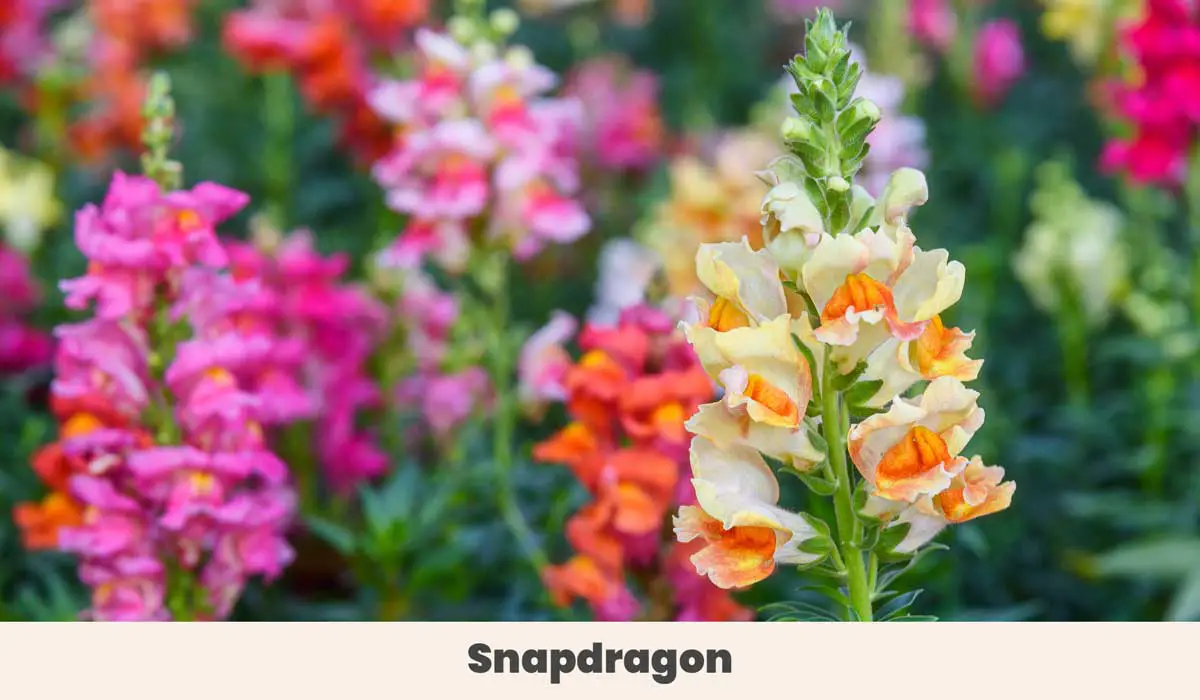
Snapdragon is a classic cottage garden flower that will bloom all summer long. Available in a wide variety of cultivars in many different colors, all feature a characteristic lance of dual-lobed flowers.
My kids love their ‘little mouths’, they make a great family-friendly feature. Their seed pods are just as magical, but a bit more grim, as they resemble tiny skulls.
| Botanical Name: | Antirrhinum |
| Growth Rate: | Moderate |
| Native Range: | South-Western Europe and the Meditteranean |
| Hardiness Zones: | 7a to 10b |
| Soil Needs: | Well drained, organically rich soil |
| Exposure: | Full sun to partial shade |
| Pests: | Aphids, mites, leaf miners, cutworms. |
| Blooming Period: | Early summer to fall. |
11. Scarlet Sage (Salvia Splendens)

For fast-growing color, it’s hard to beat scarlet sage. This perennial is native to Brazil and quickly hits a height of three feet (1m).
They produce dense clusters of bright red tubular flowers that bees and butterflies just can’t get enough of, and they produce them for a huge swathe of the year. They bloom early and often, right through to late fall, and are a vital food source for beneficial insects.
| Botanical Name: | Salvia Splendens |
| Growth Rate: | Fast |
| Native Range: | Brazil, Mexico, Southern US |
| Hardiness Zones: | 10a to 11b |
| Soil Needs: | Well drained soil, moist soil |
| Exposure: | Full sun to partial shade |
| Blooming Period: | Spring to Fall |
12. Shooting Star Flower (Dodecatheon media)

Shooting Star Flower is an exquisite, dainty purple wildflower that grows from a soft roseate of lance-shaped leaves.
They’re also known as the American cowslip, roosterhead or prairie pointers. They love gently shaded open ground and are an excellent addition to any wildflower garden.
| Botanical Name: | Dodecatheon meadia |
| Growth Rate: | Very slow |
| Native Range: | Central and Eastern United States |
| Hardiness Zones: | 4 to 8 |
| Soil Needs: | Moist, sandy, rocky or organically rich soil |
| Exposure: | Partial shade to full shade |
| Blooming Period: | Late spring |
Final thoughts
Whether you’re seeking a supplemental species or a specific show-stopper, there’s always something to showcase each year in the garden. When we slow down and survey the scene, we see a sweet and sensual delight worth savoring. Sensational!
